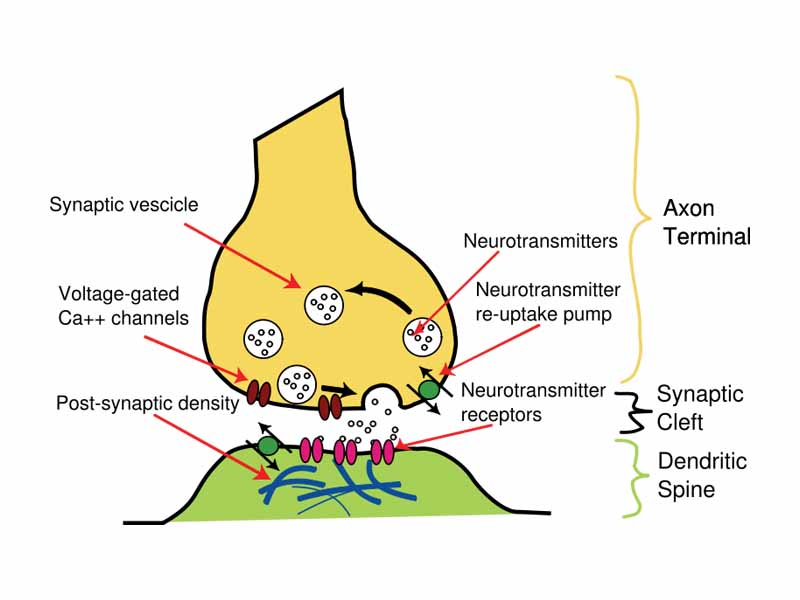Interdisciplinary Note (2 of 36)
Continuing our practice of giving extra emphasis to certain crucial MCAT topics in these discussions, let us discuss synaptic transmission of nerve impulses. Synaptic transmission involves the passage of electrical or chemical transmission from the axon of a presynaptic neuron to the dendrite of a postsynaptic neuron across the synapse, the junction between the two. Most students are plenty aware of chemical synapses, making the MCAT writers likely to introduce the electrical synapse in a passage. The plasma membranes are in contact in an electrical synapse, sharing cytoplasm through gap junctions, but in a chemical synapse, the plasma membranes are separated by the synaptic cleft, in which neurotransmitters are released and diffuse across this space from the presynaptic cell membrane to the postsynaptic membrane.
Depolarization of the presynaptic membrane in a chemical synapse opens Ca2+ channels, allowing entry of Ca2+ into the presynaptic axon terminus. Be clear on this. Ion flows in impulse transmission involve Na+ and K+ counterflows, but at axon terminus, release of neurotransmitter is triggered by Ca2+ influx. (Look for distinctions like these, the raw materials of multiple choice questions). The influx of calcium ions promotes the fusion of synaptic vesicals in the presynaptic axon terminal with the presynaptic cell membrane to release neurotransmitter into the synaptic cleft. (Read that again slowly. Practice slowing down when you hit a run that is dense with nomenclature). Typically, binding with receptors in the postsynaptic cell membrane triggers the opening of chemically gated channels. In an excitatory synapse, it is Na+ channels which are opened in the postsynaptic membrane, leading to the propagation of the action potential in the postsynaptic neuron. In an inhibitory synapse, though, the release of neurotransmitter leads to the opening of K+ or Cl- channels, hyperpolarizing the cell and preventing depolarization. Whether excitation or inhibition occurs does not depend on the particular neurotransmitter but on the context, the particular receptors and transduction sequence. Remember that! Excitation or inhibition is not a property of the neurotransmitter. The same neurotransmitters may be used different ways in different synapses. Following signal transduction, neurotransmitters are either broken down or taken back into presynaptic terminals by a process of re-uptake.

